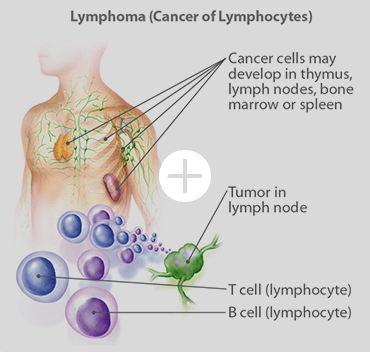

This page was reviewed under our medical and editorial policy by
Maurie Markman, MD, President, Medicine & Science
This page was updated on September 12, 2022.
Lymphoma is a type of cancer that develops in the lymphatic system and involves the immune system cells. These infection-fighting cells, called lymphocytes, can be found in various parts of the body, including lymph nodes, thymus, spleen and bone marrow. Cancer occurs when these cells grow out of control and undergo genetic changes.
This article will cover:
The two most common types of lymphoma are non-Hodgkin lymphoma and Hodgkin lymphoma.

Lymphoma may affect lymph nodes, the liver, lungs, stomach and other organs. Symptoms of lymphoma may share similar characteristics with other illnesses. If you experience symptoms that do not go away after more than two weeks or are recurring, consult your doctor.
Common lymphoma symptoms include:
The lymphoma stage describes the extent to which the cancer has spread, and is categorized a numbering system (stage 1 through 4) and may also include the letters A, B, E and S to help further describe the cancer, based on whether the patient is experiencing specific symptoms.
A and B: The letter A means that a person has not experienced B symptoms. The letter B indicates the person has experienced one or more of the following B symptoms: drenching night sweats, unexplained fever or sudden weight loss.
E and S: The letter E indicates the disease has spread to tissues or organs outside the lymphatic system. The letter S describes cancer that has spread to the spleen.
Stage 1: The cancer is detected in one lymph node region or organ.
Stage 2: The cancer is in two or more lymph node regions on the same side of the diaphragm.
Stage 3: The cancer is found in lymph nodes on both sides of the diaphragm, above and below it.
Stage 4: The cancer has spread to one or more tissues or organs outside the lymph system, such as the liver, lungs or bone marrow.
Learn more about non-Hodgkin lymphoma and Hodgkin lymphoma.